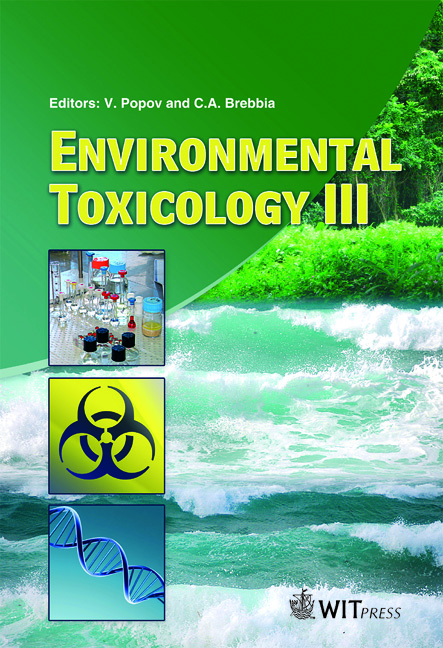Technical Issues Surrounding The Preparation, Characterisation And Testing Of Nanoparticles For Ecotoxicological Studies
Price
Free (open access)
Transaction
Volume
132
Pages
12
Page Range
165 - 176
Published
2010
Size
1,144 kb
Paper DOI
10.2495/ETOX100161
Copyright
WIT Press
Author(s)
R. Tantra, S. Jing & D. Gohil
Abstract
There is a genuine concern about how engineered nanoparticles affect the environment and this has resulted in a detailed two-part study that is presented in this paper. The first part of the study investigates some of the issues surrounding the dispersion and characterisation of nanoparticle suspensions, which are critical in order to carry out testing for understanding the ecotoxicological properties of nanoparticles in the environment. Cerium oxide (CeO2) nanoparticles were dispersed in de-ionised (DI) water and subsequently characterised using Dynamic Light Scattering and Scanning Electron Microscopy. Results showed that the reliability of data obtained depended heavily on the need to control the dispersion step and to understand limitations associated with current measurement techniques. The second part of the study investigated the fate of nanoparticles when dispersed in three different ecotox media (seawater compared with media of fish and Daphnia), in an attempt to identify initial measurement concerns. Visual sedimentation experiments showed that nanoparticles (within a two day period) were relatively unstable in these ecotox media (relative if dispersion was carried out in DI water). Although most particles aggregated into larger clusters, SEM images showed the presence of nanosize clusters (<800 nm), which were still present in these media. It is the presence of these nanosize particles that will be of utmost concern, if the hypothesis that relates particle size and toxicological activity holds true. Keywords: nanoparticles, aquatic ecotoxicity, characterisation, dispersion, aggregation, agglomerates, DLS, SEM.Keywords
nanoparticles, aquatic ecotoxicity, characterisation, dispersion, aggregation, agglomerates, DLS, SEM





